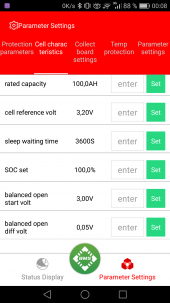First, you need to top balance that pack.
I have been experimenting a lot with that magic 80% DOD the manufacturers recommend. Notice the manufacturers don't define it beyond that, no charge to, or discharge to volts. They do define a 100% "standard" charge and 0% discharge (for 280AH Eve cells, charge to 3.65v and stop when current in drops below 14 amps, then discharge to 2.5v as full normal cycle).
Seriously, above 3.45v is barely 2 amp hours capacity. Below 3.0v is about 12 amp hours, and the battery rises 5 degrees C below 3.0v. So, I am getting about 95% of capacity (i.e. measured amp hour storage) by charging to 3.4v per cell and stopping when current drops to 1 amp in, then discharge to 3.0v.
The drawback is the long slow drop in current to 3.4v. With a standard charge, the 1 hour wait after charge, the cell will drop from about 3.55v to 3.45v. The minute you draw any power, it drops to 3.375v and really drops pretty steady after. So you actually want the higher voltage to drive the current, and it is really difficult to judge when full without waiting for the tail current. I have noticed very consistently, that the claim of 98% efficiency, is not true. More like 99.9% efficient. Seriously, I have measured it a LOT, if you emptied a cell of 270 amp hours, it takes 270.1 amp hours to fill it up again.
Silly as it sounds, the easiest and best way is measure amp hours in and out. You can use voltage, but that takes a while to settle after charging. Both in and out you get substantial "bounce". With solar, it could be hard to detect a tail current on a cloudy day.








